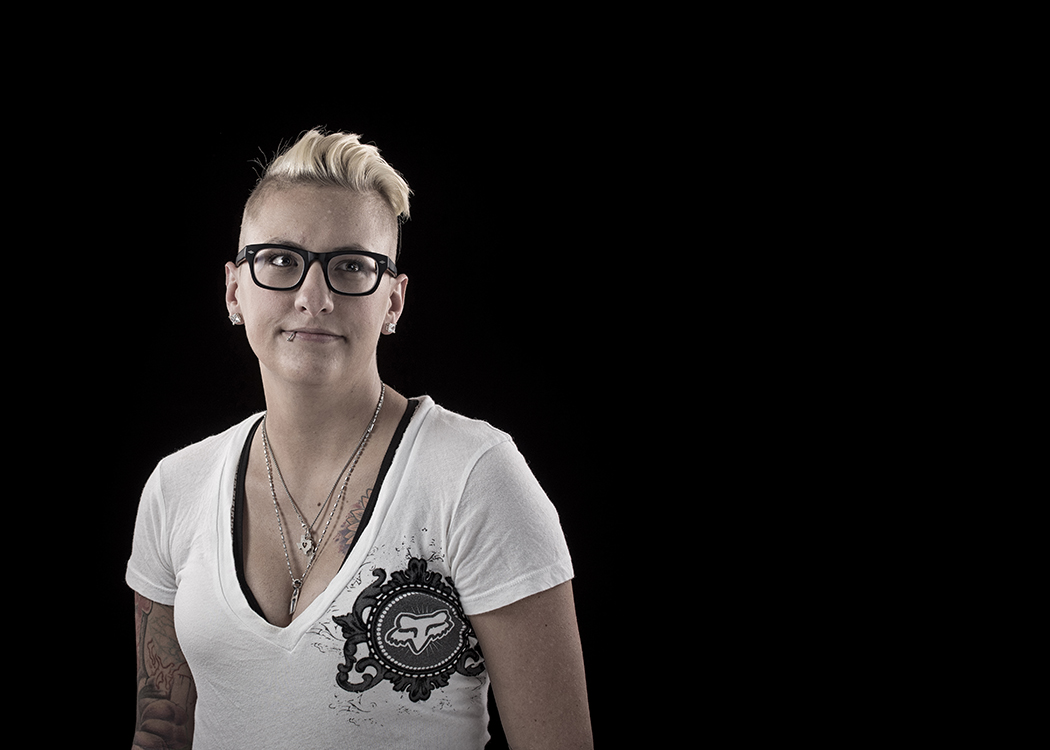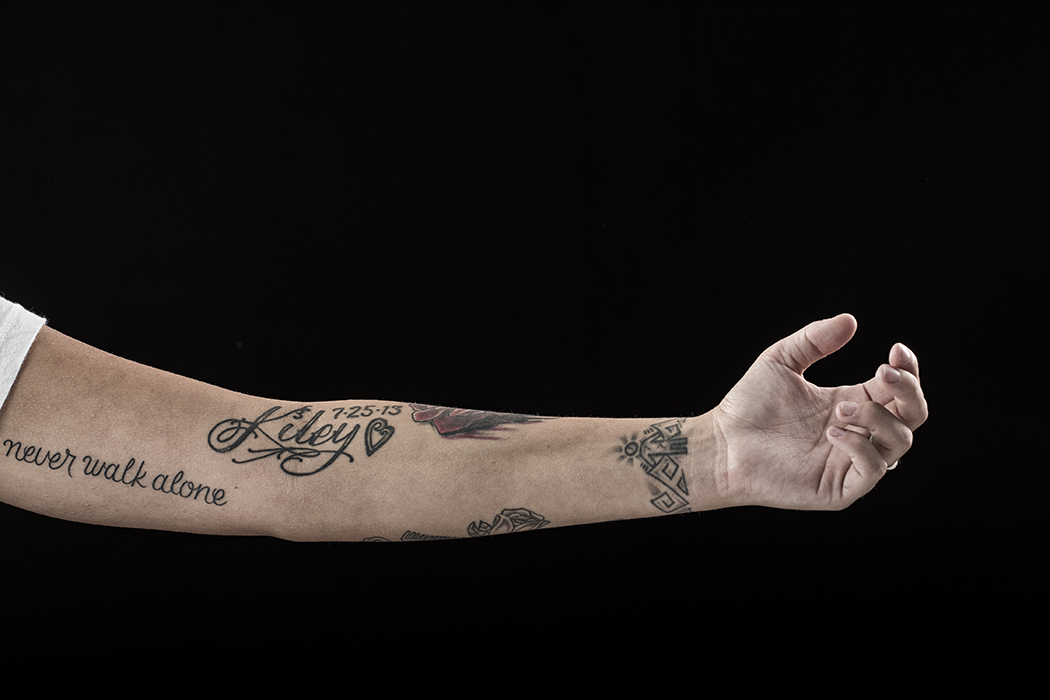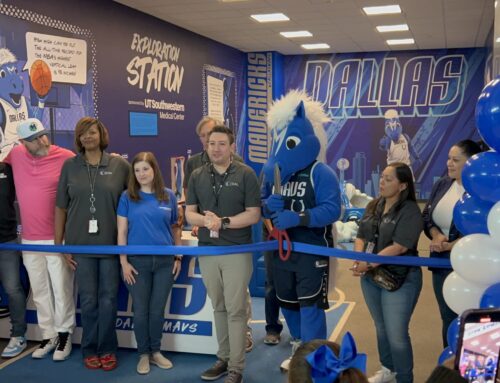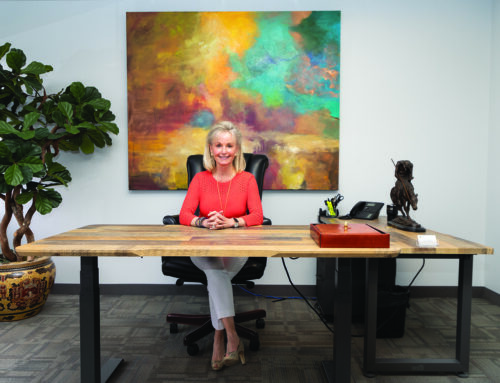
Kim Nixon (Photo by Danny Fulgencio)
The track marks on Kim Nixon’s arm aren’t obvious anymore.
The red blotches are concealed with the name Kiley, the birth date 7-25-13 and a heart-shaped charm representing mother’s love.
If the 26-year-old ever shot up again, she’d have to push the needle through her daughter’s name.
“She gave me another reason to fight, instead of giving up,” she says.
Six years of Nixon’s life were consumed with opioids, heroin and cocaine. She’s been sober for more than a year now — something that once seemed unattainable.
“It’s just calmness,” she says. “You finally feel like you can breathe. There’s not that rubber band around you that you’ve had for a long time.”
People who undergo trauma — which can be a catalyst for mental illnesses like post-traumatic stress disorder — are more susceptible to addiction. More than 59 percent of young people with PTSD develop substance abuse problems, studies show.
Trauma and addiction alter one’s chemistry, although people often do not view them as diseases.
“Once the brain changes, the systems to help you calm down and self-soothe get hurt,” says Dr. Harold Urschel, chief medical strategist of Enterhealth, an addiction treatment center in Preston Center.
Nixon and her sister were adopted into a Preston Hollow family. Like many adopted children, she struggled with feelings of abandonment. Dyslexia and Auditory Processing Disorder — which prevents her from comprehending some sounds and staying focused — compounded her mental stress. As a teen, she came out as lesbian to a world that didn’t accept her. Her friends deserted her and her parents disapproved, so she kept dating men.
“It’s very hard for me to connect to my emotions,” Nixon says. “The only one I could process is anger.”
At first, Nixon didn’t see any of these moments as traumatic. When she was diagnosed with PTSD, she felt it didn’t fit. In her mind, PTSD was for war veterans or crime victims.
But trauma, whether emotional or physical, is “when something happens that overwhelms your safety or social norms,” Urschel says.
“There was something missing, and I couldn’t figure it out,” Nixon says. “I felt drugs were the missing piece. I knew that wasn’t the key, but that worked.”
Self-medicating with drugs or alcohol to mitigate trauma only harms the brain more, says Marie Krebs, a Preston Hollow-based therapist and interventionist. Like trauma, addiction often is perceived as weakness in society, which causes people to hide from their problems, instead of seeking help.
“We don’t heal in isolation,” she says. “We get sick in isolation.”

(Photo by Danny Fulgencio)
By 23, Nixon took a combination of at least 20 OxyContin and hydrocodone, which are in the same family as heroin, every day. She passed off an old knee X-ray to a rotating cast of doctors for prescription painkillers. She thought the drugs helped her stay calm and productive.
“Whenever you look back, you’re like, ‘Oh shit, I did cross that line,’ ” Nixon says. “You don’t realize in the moment that is what you’re doing.”
Nixon is one of an estimated 27 million people in the United States who abuse prescription pills.
More than 59,000 people died from overdose in 2016, according to the New York Times. The rate has increased so rapidly that it’s considered a public health crisis.
The Preston Hollow area has seen 33 overdoses in three years, and 58 percent of them involved prescription painkillers. When addicts can no longer acquire the prescriptions they need, they seek alternative options, sometimes with fatal results. “When addicts die, many are mixing and matching whatever they can get … It’s a poly drug problem,” says Jane Maxwell, a research professor who has devoted 46 years to researching drug trends. “It’s ‘I can’t get heroin today, but I’ll go get whatever to get me through the night until I can solve the problem.’ ”
Nixon tried heroin — a gift from a man she dated — for the first time on her 23rd birthday. Before she met her family for dinner, he showed her how to shoot up in a parking garage.
“I was uncomfortable with my parents and my sister,” she says. “I knew hydrocodone brought me comfort … so that’s what gave me the green light for heroin.”
Nixon shot up regularly after that for several months, until she found out she was pregnant. She went to an outpatient program that recommended she take Suboxone to curb her opioid cravings. The consequences of that drug were heavy.
When she was born, Nixon’s baby girl was jittery and couldn’t be soothed. The newborn, Kiley, was withdrawing from Suboxone, which required a month stay in the hospital.
“There were babies in the NICU that were so tiny and weren’t able to go home, and it broke my heart,” Nixon says. “You see my child at 9 pounds, very big and healthy, but she’s there because of something I did. All of these babies — it wasn’t because of something their parents did to them.”
Nixon called the little girl’s father two weeks after she was born. She told him she didn’t need any money, but she hoped he’d be a part of her life.
He seemed excited, Nixon says. But Kiley never met her father. Three days later, he was dead of a suicide. Nixon found out on Facebook.
His parents still don’t know about Kiley, and Nixon wrestles with telling them.
“It’s something I think about all the time,” she says. “It’s one of the reasons I used. … Maybe it’s not the right time. Maybe they need more time. But my daughter is 4. She’s going to start asking questions, and I won’t be able to answer them.”
Parenting, mourning and working full-time was overwhelming, Nixon says. She turned to cocaine for comfort and eventually admitted herself into Enterhealth, where she was diagnosed with PTSD and learned coping skills to quell her fears of abandonment.
“They may not like going through therapy, but once they have, they’re so relieved,” Urschel says. “They feel like a great weight has been lifted from their shoulders, and they’re starting to be happy again, many times for the first time in years.”
Nixon feels at peace, she says, but she’s navigating how best to raise her daughter. Her parents took care of Kiley while Nixon stayed in sober living houses. She wasn’t there to tuck her in to bed or give her baths, something she did every night, even when she was using.
She knows her parents, who are 70 and 67, already raised two daughters. But she worries about disrupting her daughter’s sense of stability. Still, she moved back to Preston Hollow recently and lives with her family once again.
“I want her to live with me,” she says. “At the same time, it’s removing her from all she knows. Those are the people who have been in her life for all of it.”
But Nixon sees that her family is proud of how far she’s come — they celebrated her one-year sobriety date with a trip to Disneyland. But she won’t say she feels accomplished; she’s just grateful.
“I remember when I was using, there were always conflicts, and now they just see someone whose very calm,” she says. “They probably notice I’m able to bring up the elephants in the room, because I’m not scared of them.”






